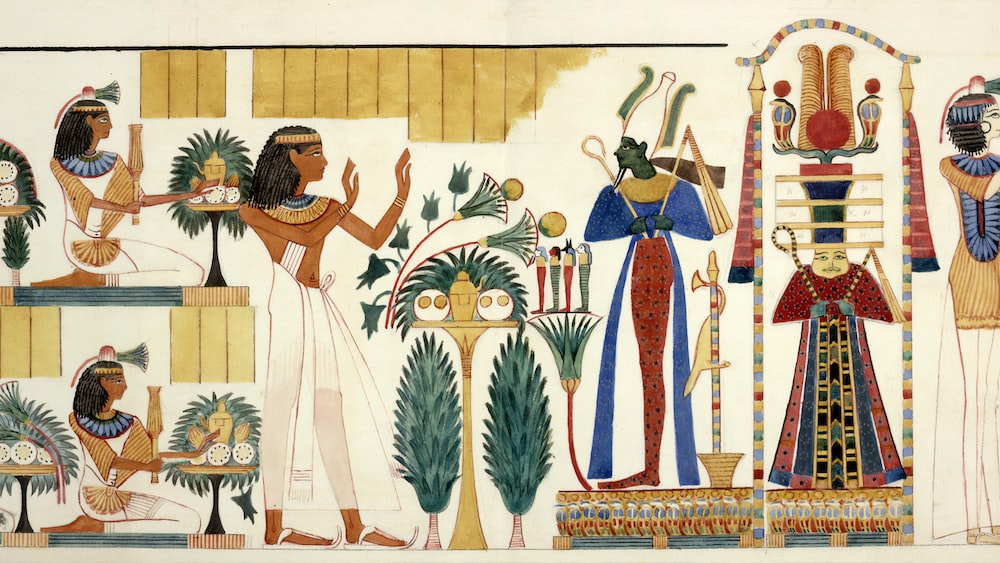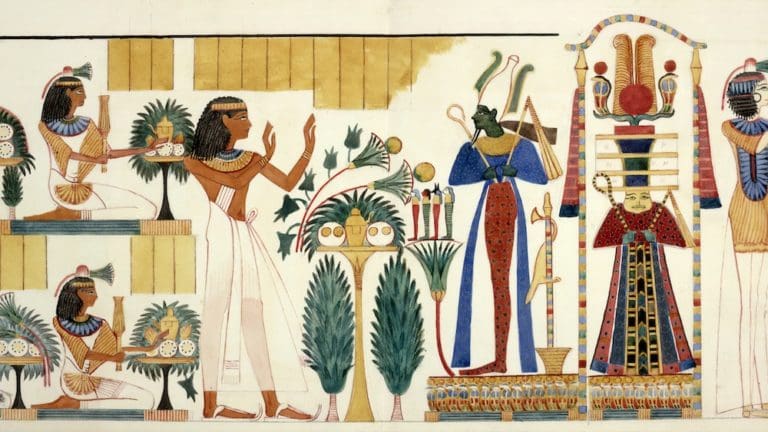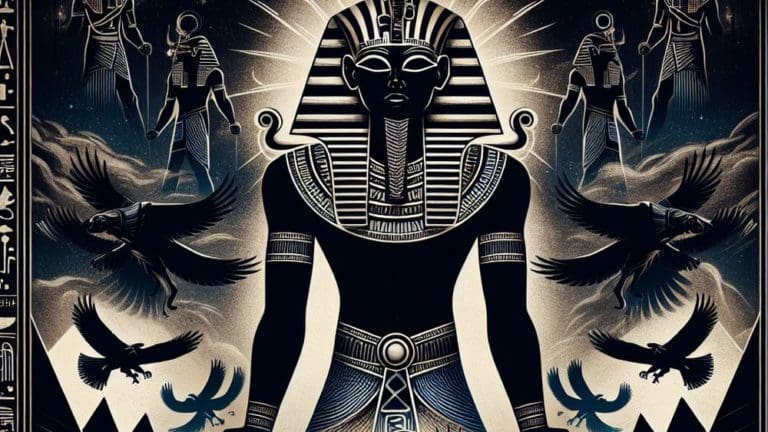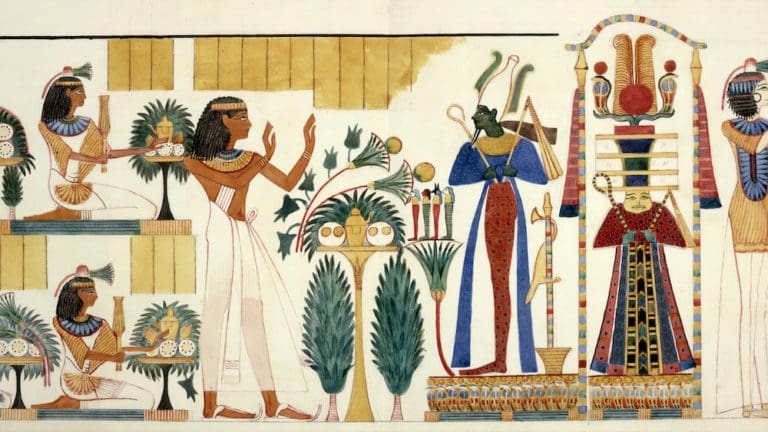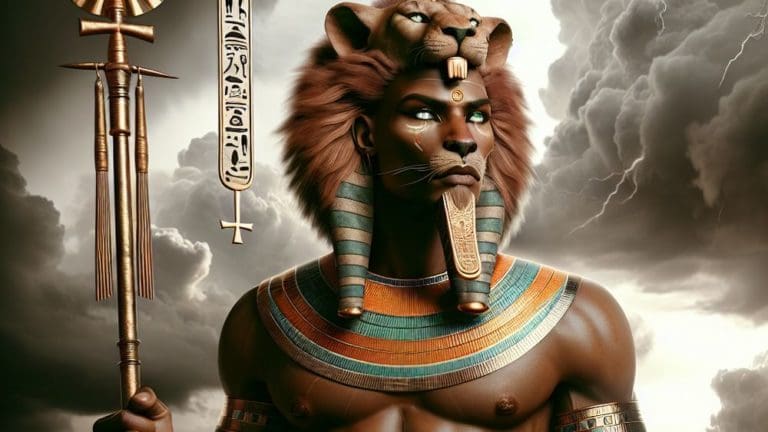Unveiling The Myth: Why Were Geb And Nut Separated?
Unveiling The Myth: Why Were Geb And Nut Separated?
Have you ever gazed up at the sky and wondered about the mysteries it holds? One such mystery takes us to ancient Egypt, where the cosmos were believed to be governed by powerful deities. The captivating tale of Geb and Nut is one such cosmic drama that is etched deep into the annals of ancient Egyptian mythology. Why were Geb and Nut separated? This intriguing myth may appear to us as a simple star-crossed love story, but it extends far beyond, encapsulating within its narrative the ancient Egyptians’ deep understanding of the universe and their place in it.
This blog post will delve into the details of this engrossing mythology, unraveling the symbolism it carries and how it influenced the cultural practices and beliefs of an entire civilization. So, brace yourself as we journey back in time, transcending boundaries into the fascinating world of ancient Egyptian deities, and marvel at the intricate web of myths that continue to mystify us today.
The Mythical Figures: Geb and Nut
In the enthralling pantheon of ancient Egyptian deities, two figures of immense significance are Geb, the earth god, and Nut, the sky goddess. Their story is a stirring allegory of love, separation, and creation.
Who is Geb?
Geb, also known as Seb or Keb, is the ancient Egyptian god of Earth. In the hierarchy of deities, he is the son of the sky god Shu and the water goddess Tefnut, and the grandson of the great sun god, Atum. Geb is often depicted as a dark-skinned man lying on the ground, symbolizing the Earth. In some portrayals, he is shown with green skin, featuring the flourishing flora of the Earth.
His figure is unique, half-buried in the ground to represent the hills and valleys of the Earth. The goose, also seen in his iconography, is a significant detail because ‘Geb’ translates to ‘goose’ in the ancient Egyptian language. As the primary earth deity, Geb presided over crops, agricultural law, and was considered the ultimate judge in both mortal and divine disputes.
Geb was central to the cosmology of Heliopolis, an ancient Egyptian city known for its theological and philosophical intellectual capital. Despite his position of prominence, he is renowned for his passionate love for his sister, Nut, the sky goddess, which leads us to the major disruption in the celestial order.
Geb, the ancient Egyptian god of Earth, is depicted as a dark-skinned man lying on the ground with green skin, symbolizing the flourishing flora of the Earth.
Who is Nut?
Nut, the ancient Egyptian sky goddess, is Geb’s sister and the quintessential figure of celestial affairs. Her posture in depictions is as riveting as it is symbolic. Laid across the sky, her body arches over the Earth, sheltering it with her star-studded anatomy. Her lower body, symbolizing dusk, fuses with the western horizon, while her upper body, indicative of dawn, merges with the east. Thus, Nut embodies the complete journey of a day.
In ancient Egyptian cosmology, she was the welcoming vessel of the sun god Ra, swallowing him at sunset, holding him in the netherworld during the night, and rebirthing him at dawn. Just like Geb, Nut is an essential member of the Heliopolitan Ennead, adding further complexity to the intriguing myth of why were Geb and Nut separated.
The Ancient Egyptian Cosmology
The tale of Geb and Nut is but one thread in the elaborate tapestry of ancient Egyptian cosmology that wove together celestial, mortal, and divine realms into a harmonious symphony of existence.
Understanding the Role of Deities in Ancient Egypt
In the worldview of ancient Egyptians, deities weren’t merely figures of reverence; they were pivotal to the cosmic order that harmonized the world they lived in. Every god and goddess had a distinct role, and their interactions often explained the natural phenomena observed by mankind.
For instance, it was Atum, the sun god, who spawned the world and the first pair of divine beings, Shu and Tefnut, representing air and moisture respectively. This set the stage for Geb and Nut, representing Earth and Sky, respectively, underlining how every natural element, whether tangible like the earth or intangible like the air, was mediated through a divine figure in ancient Egypt.
The Heliopolitan Ennead and Its Significance
The Heliopolitan Ennead is a group of nine deities worshipped primarily in Heliopolis, the city of the sun. This divine ensemble constitutes the most extended family tree in the entire Egyptian pantheon, escalating from the self-created Atum to his great-grandchildren. The deities in this family hadn’t merely descended from one another but were essentially interrelated, embodying the complex system of natural elements prevalent in the world.

The Ennead’s role gains ground when the romantic entanglement between Geb and Nut results in an unprecedented celestial uproar. As the Ennead grapples with managing cosmic order while navigating divine passions, it offers a profound insight into the values and beliefs held dearly by the Egyptian civilization.
The Tale of Geb and Nut’s Separation
At its heart, the tale of why Geb and Nut were separated unravels as a powerful love story amidst the canvas of cosmic equilibrium. But the layers hidden beneath this narrative narrate the saga of creation, cosmic order, and the cyclical nature of life itself.
The Forbidden Love Between Geb and Nut
Imagine this: You are in the heart of ancient Egypt. The bustling marketplace, the towering obelisks, the people chanting in hushed whispers about the forbidden love between the gods Geb and Nut. Now who were Geb and Nut? Geb was the deity of the Earth in ancient Egyptian religion. Nut, on the other hand, was the goddess of the sky. They were siblings but they were also deeply in love. An unusual concept for us modern folk, perhaps, but quite common in various ancient mythologies.
Sadly, their love was not destined to be an easy one. As it so often happens in the affairs of gods and humans alike, there were complications. The Greek historian Plutarch wrote that “the Sun, being indignant at the fact that Nut had been consecrated to all the universe, pronounced a curse upon her that she should not be delivered of her child in any month or year. Hermes, however, being in love with her, won the Moon’s favor for no great price…”. This, dear reader, is where our tale of love starts to intertwine with the cosmic workings of the ancient Egyptian universe.
The Intervention of Ra and Shu
The divine drama that was unfolding between Geb and Nut upset the balance of the cosmos. This prompted the involvement of other powerful gods, namely Ra, the sun god, and Shu, the god of air. Ra, deeply upset that Nut was pregnant (by none other than our Geb), cursed her by declaring that she could not give birth on any day of the year.
However, our tale does not end here. Shu, instigated by the clever Thoth, intervened and managed to win five extra days from the moon. These days were added to the Egyptian year, allowing Nut to give birth to her children. Nevertheless, Ra’s wrath was so great that he commanded Shu to separate Nut from Geb, forever keeping the sky apart from the earth. And thus, dear suckers for mythological love stories like me, the tale of why were Geb and Nut separated is etched in history., encapsulating the drama, the romance, and the divine intervention that characterized this cosmic love story.
The involvement of powerful gods, Ra and Shu, led to the separation of Geb and Nut, forever keeping the sky apart from the earth.
The Symbolism Behind the Separation
The tale of Geb and Nut, though wrought with emotion, bears a deeper cosmological underpinning symbolic of Egyptian beliefs about their world. Their forced separation set in motion the creation of earth and sky, their constant longing for one another symbolic of the interdependent relationship between the two realms.
The Creation of Earth and Sky
One must remember that in the minds of our ancient Egyptian brethren, deities were not abstract concepts; they were very much living, breathing archetypes that ruled over their physical counterparts. Geb, the god of the earth, was the earth itself; Nut, goddess of the sky, was the sky itself. Their tragic separation, therefore, was a clever allegory for the spatial segregation of sky and earth.
Sounds familiar, doesn’t it? Look up, dear reader. Do you see the wide, open sky stretching above, forever reaching out to touch the earth that lies beneath our feet? That’s Nut and Geb for you. You are a part of this ancient myth every time you step outside your door.
The Impact on Ancient Egyptian Beliefs and Rituals
The consequences of Geb and Nut’s parting ripple out far beyond the realm of myth. It significantly shaped the beliefs and rituals of ancient Egyptians. The separation served as a cosmological explanation for natural phenomena. Geb, as earth, was considered the judge who holds the balance between chaos and order, while Nut was viewed as the protectress who swallowed the sun at night and gave birth to it each morning.
The tale of Geb and Nut’s separated love also reaffirmed the sanctity and power of the gods’ decrees, a crucial feature of the Egyptian religious ethos. This story served as a reminder for our ancient precursors, underlining the need to respect the divine realms, and emphasizing that the gods’ decisions, however baffling they may be to us, are final and irrevocable.
The Legacy of Geb and Nut’s Story in Modern Culture
The story of Geb and Nut, much like the sturdily-built pyramids, has held up against the winds of time. Its influence can be seen peppering modern culture – from literature to art, and even, believe it or not, pop culture.
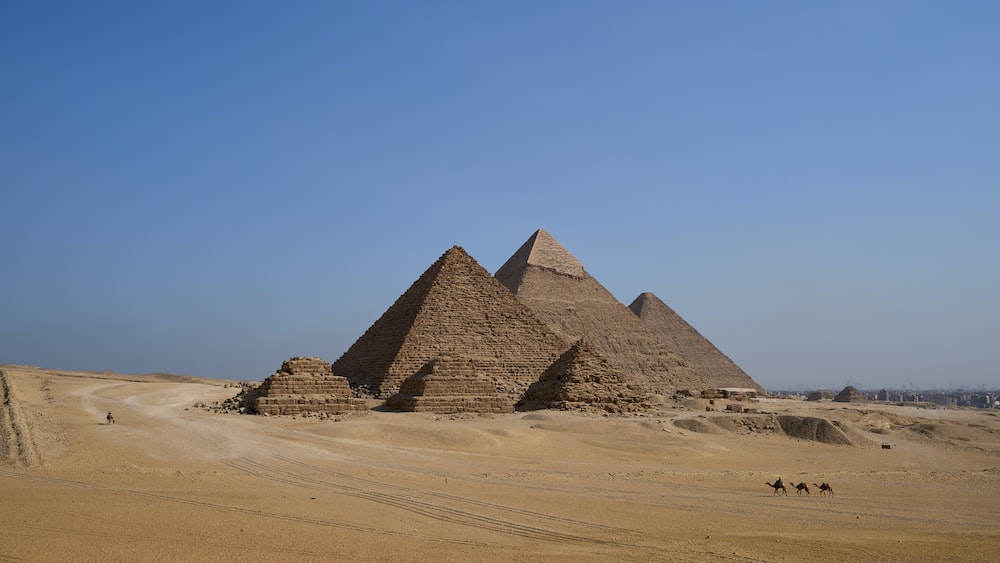
Geb and Nut in Literature and Art
Geb and Nut’s tale, though ancient, continues to inspire modern works of art and literature. In Rick Riordan’s The Kane Chronicles series, Sadie Kane is the daughter of Geb and Nut. Riordan skillfully incorporates the quintessential drama of Geb and Nut’s romance in Sadie’s character and her adventures. In the realm of art as well, their love story is often illustrated. Numerous ancient and modern artistic depictions show Nut arching gracefully over a reclining Geb, a powerful visual reminder of their love that continues to defy separation.
Geb and Nut’s timeless tale of love and separation serves as a source of inspiration for both literature and art.
The Influence on Modern Mythology and Popular Culture
From literature to architecture, the impact of the Geb and Nut saga is unmistakable in our present world. Novels such as Rick Riordan’s The Kane Chronicles draw deeply from ancient Egyptian mythology, featuring the deities Geb and Nut in impactful roles. Their tale of star-crossed lovers split eternally apart profoundly affects readers, resonating with our notions of the struggle against fate.
Modern architecture often mirrors the iconography of the Egyptian pantheon, including depictions of Shu, the grandfather and balancer between the earth (Geb) and the sky (Nut). These images elicit a sense of awe and fascination, continually fuelling our collective curiosity about the question: why were Geb and Nut separated?
FAQs
1. Why were Geb and Nut forbidden to be together?
Upon delving into the ancient texts, it is evident that Geb and Nut were forbidden to unite due to fear of a power shift in the cosmic balance. Their alliance had the potential to disrupt the primordial equilibrium, prompting their forced separation.
2. How did the separation of Geb and Nut shape the Ancient Egyptian understanding of the world?
The separation of Geb and Nut played a significant role in defining the Ancient Egyptians’ cosmology. Their legend formed a cornerstone for the Egyptian worldview, illustrating the concept of balancer as a pivotal role needed to maintain cosmic stability.
3. Who are the children of Geb and Nut?
The children of Geb and Nut are Osiris, Isis, Seth, and Nephthys. Each of these figures significantly influenced Egypt’s folklore, contributing to its rich tapestry of mythological narratives.
4. How is the story of Geb and Nut represented in modern culture?
In modern culture, the story of Geb and Nut serves as a potent symbol of love overcoming adversity. This narrative finds its echo in many contemporary tales where protagonists defy norms and strike a balance between love and duty.
Conclusion
As we demystify the lore of Geb and Nut, the echoes of this ancient fable linger. Their saga is a testament to humanity’s timeless search for wisdom and understanding, spanning across epochs and cultures. Undeniably, the story of Geb and Nut has encapsulated readers, sparking ongoing debates, and fostering an enduring curiosity about why were Geb and Nut separated.
By entwining the past with the present, the substance of their narrative continues to resonate. It acts as an invitation, beckoning us towards an exciting journey of exploration and discovery. Remember, history isn’t just about the eras that have passed; it’s a compass that navigates us through the mysteries of the time that’s yet to unfold.
Thank you, my dear history buffs, for joining me on this thrilling expedition. Until our paths cross again on our next adventure, keep those archaeologist hats on, continue unravelling the threads of the past. As we dive into deeper mysteries, may your enthusiasm to uncover the secrets of the past never fade. Keep exploring, friends!
Yours truly, Cedric

